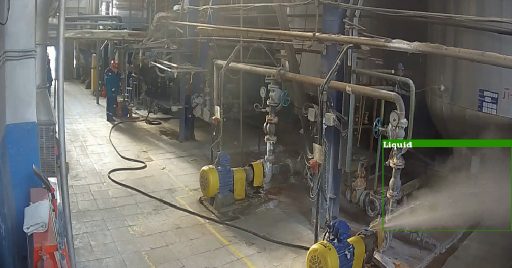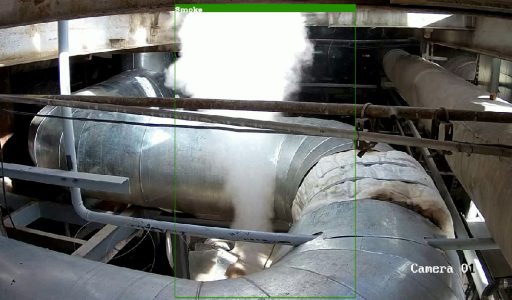Preventing fire and explosion in refineries is always the first priority in safety strategy and risk management because it is easier and more cost-effective. It will save many lives and the environment as well. Artificial intelligence can prevent fire and explosion in refineries due to its high capabilities in real-time monitoring.
This article will explore how artificial intelligence can prevent fire and explosion in refineries so HSE managers can make an informed decision.
Table of content
Why use AI to prevent fire and explosion in refineries?
Before exploring how artificial intelligence can prevent fire and explosion in refineries, we need to understand why we need to use AI for such a purpose.
Fire and explosions are very common in refineries considering the presence of both flammable materials and ignition sources. In fact, oil & gas industry has the highest incidents of fire and explosion compared to any other industry! According to this report, 21 deaths in US refineries has occurred due to fire and explosion between 1995 and 2005.
There is also a down period after fire and explosion, which will cost millions. This is just on top of the actual damage to the property. Obviously, there is insurance in place, but the payment might not cover the actual cost assuming insurance terms are invalid due to not complying with safety guidelines!
There is also a down period after fire and explosion, which will cost millions. This is just on top of the actual damage to the property. Obviously, there is insurance in place, but the payment might not cover the actual cost assuming insurance terms are invalid due to not complying with safety guidelines!
On the other hand, there is the risk of fines for endangering the environment. The best example is the case of Buncefield Oil Storage Depot in Hertfordshire, England.
The 2005 fire and explosion in Buncefield Oil Storage Depot in Hertfordshire, England, started from an overfilled gasoline tank, despite the fact that the tank had 2 forms of level control! A gauge controlled by staff and an independent high-level switch (IHLS) that worked automatically were monitoring the operation. When the gauge got stuck, IHLS became inoperable, so communication with the control room was terminated.
More than 250,000 liters of gasoline leaked from the tank before the explosion occurred. As a result, a vapor cloud formed and, after ignition, caused a massive fire and explosion. It was the largest fire in peacetime UK that burned for five days and engulfed more than 20 fuel tanks. The explosion registered 2.4 on the Richter scale!
Following the incident, a thorough investigation took place, and eventually, St Albans Crown Court charged five companies with offenses amounting to $5 million!
According to FEMA, 40% of organizations fail to recover after a fire accident which is a big number!
Aside from the monetary loss, there is the problem of reputation that will be tainted after a fire and explosion incident. The organization can not be trusted with the life of employees so recruiting process will be challenging.
Considering the number of fire and explosions in refineries, current fire detection systems seem to be unable to prevent or detect all incidents! They are limited to old technologies that can not overcome the complex challenges of refinery structure or human errors.
On the contrary, artificial intelligence incorporates machine learning capability with high-speed computer processing. These features make it an unmatchable solution for real-time monitoring in refineries to prevent fire and explosions.
5 ways AI can prevent fire and explosion in refineries
Artificial intelligence is an innovative technology that is revolutionizing all industries. When it comes to workplace safety in a sensitive place such as a refinery, AI can do magics.
AI is a self-taught technology that identifies and corrects its own errors by learning from mistakes. It is initially trained with raw data such as pictures and videos of fire and explosion incidents in different circumstances so it can detect it automatically. This intelligent system improves with every image and video it receives.
Then the system is integrated into CCTV cameras located on-site. The number of cameras depends on the size of the site. AI will always check the integrity of cameras to make sure they work properly otherwise, an alert will be sent to fix the problem immediately. Every time a fire and explosion hazard is identified, warnings will be sent via text messages according to pre-defined settings to certain people at certain times. Those hazards might be in the following forms:
1. Detecting leaks and vapor clouds
Hydrocarbon gas leaks are common from piping systems, in particular near flange gaskets. High-pressure systems are also more susceptible to leaks. Tanks might also be overfilled due to system failure.
Leaks do not always result in fire or explosion, but the consequences are devastating nevertheless. The environment can be harmed due to toxic chemicals. There is also the cost of decontamination that follows.
Current detection systems are not able to identify all gases that might leak. They also require several wired hydrocarbon leak detectors for each storage tank that are wired back to automation system. The cost will easily add up considering the number of tanks.
But AI can be trained by the actual data from all past incidents to identify every possible gas & liquid leak just in time to raise the alarms. It can also learn scenarios that are rare but still possible. Even the timing of alarm can be set according to leak pressure. Ai can prevent the smallest leaks from turning into massive explosions.

2. Detecting ignition sources
There are many sources of heat or spark that can easily ignite a vapor cloud or liquid leak. If such sources reach a heated point, such as a mechanical pump, extinguishing the fire will be difficult. Refineries have several pump stations near retention bunds!
Unpermitted work such as hot works too close to fuel sources is dangerous, but current detectors can’t see and prevent such operations. They are often supervised by humans who are prone to human error! There is also the risk of dangerous behaviors such as smoking that can go unnoticed by supervisors!
Ai, on the other hand, can see through cameras and sound alarms when unsafe operations and poor practices take place. It can supervise the operations in real-time without a common short span of human attention and recognize when they are reaching a dangerous level.
3. Detecting smoke
Smoke is a sign of fire hazard that can make alarms go off, assuming they work correctly! Smoke detectors are simple machines that require regular cleaning and maintenance so sensors are clear from dust. But even if they are perfectly clean, they might just mistake high humidity in the air with smoke and raise the alarm. Even chemical density, which is common in refineries, can sound the alarms. Their battery requires frequent replacement otherwise they are useless.
On the other hand, Ai is a computer system that watches the site through cameras and literally can see smoke when it is just starting. Early detection of smoke can prevent fire and explosions that result in the saving of lives and assets.

4. Detecting early fire
A small fire can be easily managed if it does not spread to dangerous areas such as fuel tanks. But not always the detection system or staff can observe this small fire. Some places are not frequently visited by workers or are not in the range of detectors due to space limitations in refineries.
But AI can watch such places no matter how confined or deserted. Even smallest flame can be identified just in time to initiate the fire extinguishing process and prevent devastating explosions.
5. Detecting fallen person
A fallen person might have been exposed to leaked gases even before the leak detection system recognizes that. This small leak might just be ready to explode if an ignition source becomes available. Identifying such cases saves not only a life but also prevents fire and explosion.
Current detection systems are not able to identify such cases in refineries, but AI can because the artificial intelligence system is trained to identify human posture and recognize when a person is fallen and not moving. This feature can protect employees and also prevent fire and explosions long before they can happen.
Conclusion
Artificial intelligence can prevent fire and explosions in refineries by benefiting from machine learning and high-speed computer processing for real-time monitoring and reaction time reduction.
AI is capable of learning to identify leaks, ignition sources, smokes, small fires, fallen persons and sounding alarms. It does so by learning from raw data and identifying similar cases through installed cameras on site. The settings are customizable to match the needs of each refinery site. It has many options for sending warning text messages both inside the site and to the sources outside long before a fire and explosion can occur.
HSE managers can incorporate artificial intelligence in their process safety strategy to prevent fire and explosion in refineries. This choice will result in saving the lives of employees and billions of dollars worth of assets. It can create a positive reputation that attracts and retains talent. It also prevents any damage to the environment, which is subject to fines by legal systems. Artificial intelligence is the ideal solution to the problem of fire and explosion in refineries.